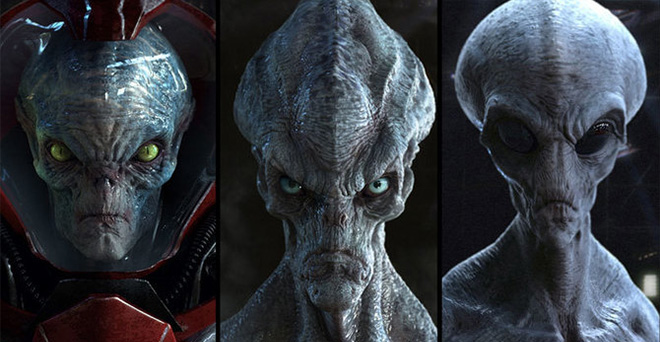
You can also do all the post-processing and color-correction work right in the Toolbag, but I prefer Photoshop as I can also place some additional elements on the background to make the image look more eye-catching and complete. If you’d like to know more about the in-depth process of rendering in Marmoset, check out my article at the Marmoset website where I show my settings step by step. I use a set of cameras for the full-body and close-up scenes of my model, this helps to show it from all angles and build a balanced composition. I adjust the shaders, set the lights and check how everything looks altogether. I enjoy rendering in this program, because it handles low poly and high poly meshes smoothly, rendering both at high speed and in real time. When all the textures are ready and exported, I take everything into Marmoset Toolbag.

I’m using a lot of Fill Layers with masks which make the painting process much more flexible as I can easily adjust the colors and other layer parameters for each element.

I’m using a Weave texture for the cloth, Metallic/Roughness parameters for metal parts and so on). In this project, I use its PBR functions as I want to play with the dynamic lighting and have my materials look more like their real-life references (i.e. Substance Painter has dozens of tools and features that are great for both realistic and stylized textures. This is my favorite step (along with sculpting the high-poly) as it gives a lot of creative freedom. I toggle through all the maps to check if everything is clean and then start texturing. I try to keep the folds as simple as I can, constantly referring to the mood board of the images that I collected earlier.īaking and texturing in Substance PainterĪfter setting up a new file with Metallic-Roughness template in Substance Painter, I bake all the maps on the exploded version of the mesh and then I replace it with the combined one in Edit > Project Configuration. This part is fun and challenging at the same time as I need to keep a balance between large, medium, and small details without going too much into realism. I’m also creasing the edges so that everything remains sharp enough when I’ll be adding more Subdivisions.įinally, I’m using the Orb_Cracks brush by Michael Vicente (Orb) to create stylized folds. You can find them in the EdgeLoop tab which is located in the Geometry menu. Once I’m happy with the silhouette, I add thickness using the Panel Loops. Notice that at this step I’m still working on the lowest subdivision. Then I’m using the Move Brush to pull the mesh, extending the sleeves and the bottom part until I have a nicely defined silhouette. I’m making the initial block out either from the body mesh or using the Topology Brush to draw out the silhouette right on the body mesh as well. The process of modeling the bulky clothes, such as this kimono, is pretty much the same at the beginning. Apart from that, I’m using masks and polygroups and trying to keep the topology as low as possible so that it’s easier to manipulate the shapes and move the things around. Those are the Move Brush, Clay Buildup Brush, Dam Standard Brush, Pinch, and Inflate. I’m using the most basic tools during the block out stage. At some point, the model will start looking better and better, just keep going. Use your references, find weak spots and fix them. The important thing here is not to give up.

Starting out from scratch is always a challenge, because at the beginning everything looks messy and not appealing at all. This way, I was able to play with shapes and proportions while practicing the anatomy. I started my block out from a dynameshed sphere and was adding more spheres for the arms, legs and everything else, using the Insert Sphere Brush.
#ZBRUSH TUTORIALS GUMROAD FREE#
I didn’t have any deadlines for this project as I was making it for my portfolio, so I was free from any boundaries and I decided not to use any readymade base meshes.


 0 kommentar(er)
0 kommentar(er)
